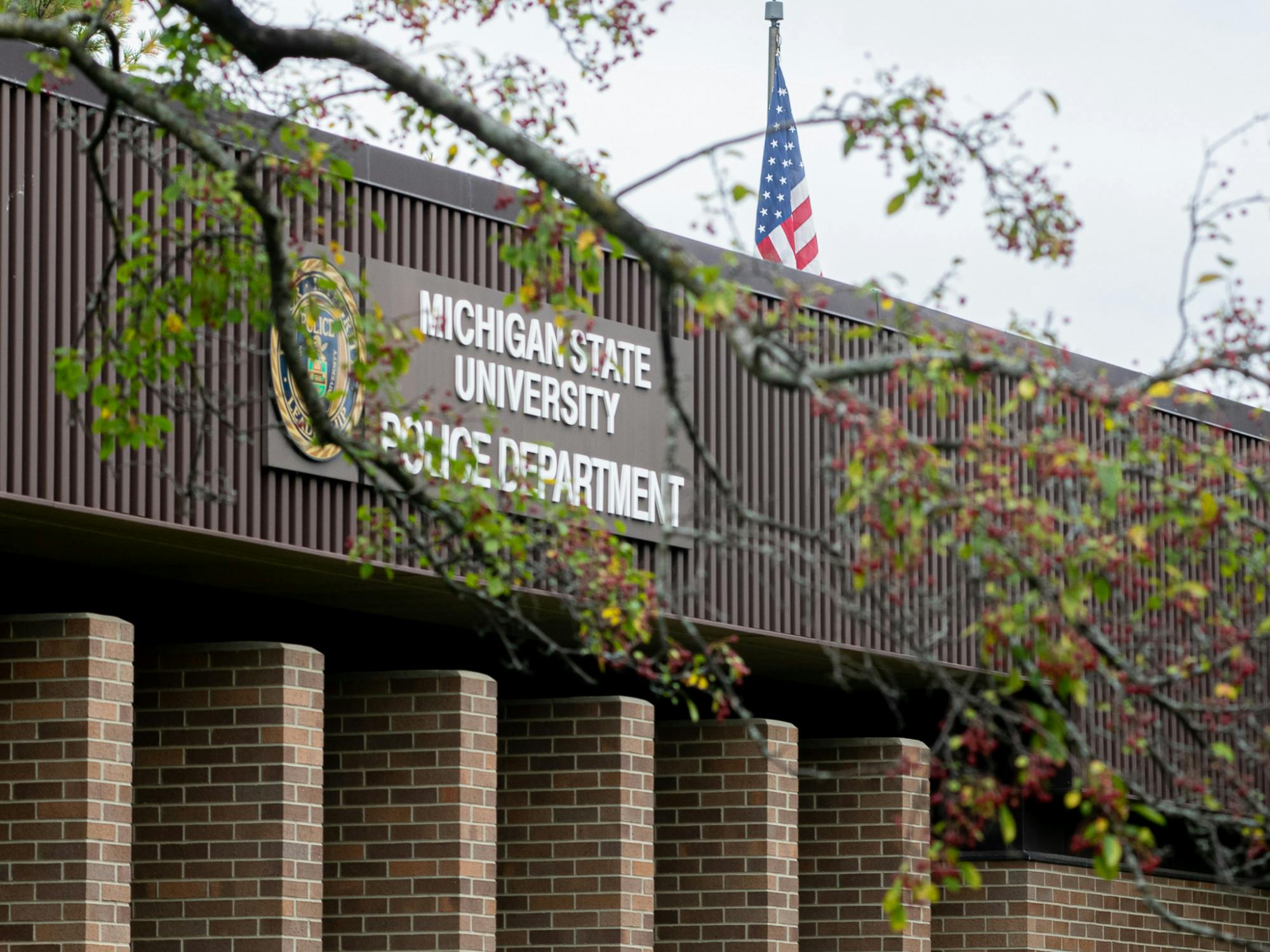WARNING: THIS ARTICLE CONTAINS DISCUSSION OF SEXUAL ASSAULT AND RELATIONSHIP VIOLENCE
Michigan State University 2021 Security & Fire Safety Report gives the public a glimpse at a range of reported crimes within the 2020 calendar year.

The Michigan State University Police Department, photographed Oct. 12, 2021.
WARNING: THIS ARTICLE CONTAINS DISCUSSION OF SEXUAL ASSAULT AND RELATIONSHIP VIOLENCE
Michigan State University 2021 Security & Fire Safety Report gives the public a glimpse at a range of reported crimes within the 2020 calendar year.
The annual report is mandated by the federal Clery Act, which aims to provide transparency regarding crime statistics on all college campuses across the U.S. The report focuses on a small number of crimes, totaling 14 — as well as the number of liquor, drug and weapon law arrests and disciplinary referrals.
The Clery Act does not require for a crime to be proven in order to be included in the annual statistics. MSU Police Department Public Information Officer Chris Rozman said the only requirement is that the crime be reported by a student within the confines of MSU-owned or operated property. No formal investigation has to take place in order for a reported crime to show up on the report.
The report also defines the crimes listed based on federal statutes, not state ones. Due to this, the definition of some crimes listed are different from what MSUPD or other Michigan law enforcement agencies would pursue if an investigation took place.
Despite this, Rozman said that the numbers are “pretty reliable” for tracking on-campus crime.
The 2021 report is distinct from previous years, as 2020 was greatly affected by a global pandemic that emptied much of campus starting in March. For example, approximately 16,000 students lived in campus residential facilities in 2018 and 2019. In 2020, that number dropped to only approximately 4,000 for fall semester.
With less people, less crime was reported on campus property. Some numbers stick out, even with this fact in mind.
Motor vehicle theft led all crimes in 2020, with 21 reported incidents. Burglary is a close second, with 19 incidents. Rape, dating violence, aggravated assault and stalking made up significant portions as well, with 13, nine, seven and 19 incidents reported respectively.
Burglaries, in particular, plunged in 2020 to 19 reported, in comparison to a three-year high of 63 reported in 2019.
Rozman said that this drastic drop can mostly be attributed to the lack of people living on campus in 2020. He added that increased campus security methods may have contributed as well.
“I would attribute (the drop) to the COVID numbers,” Rozman said “And we have increased building security ... We’ve increased our access control. We’ve increased cameras in the residence halls.”
Some crimes in the “Total On Campus” category of the report come with asterisks — specifically sex-related crimes.
Rape and fondling are both denoted due to the crimes of Larry Nassar. In 2020, according to the report, one reported rape was related to Nassar’s crimes, while the remaining 12 were unrelated.
Previous years were more affected by this denotion. While it is not clear how many rapes can be attributed to Nassar in 2018 and 2019, the statistics do not give a clear view of such crimes with them included.
However, another category included in the report, Campus Residential Facilities, or CRF, does not include this denotion in any year. This means no report within this category was influenced by Nassar. As such, it gives a clearer, if narrower, view of rape report trends on campus.
Support student media! Please consider donating to The State News and help fund the future of journalism.
Reported rapes in CRF continued a downward trend from previous years, but slowed significantly in 2020.
Compared to 2019, 2020 reported three less reported rapes in CRF. Take into consideration the fact that far fewer students lived in on-campus housing in 2020, and this number is noticeably larger in comparison to many other decreased crime numbers.
Rozman said the relatively higher number can be attributed to two things: Late reporting and increased numbers of survivors coming forward.
Late reporting occurs when a survivor reports a sexual assault or other sex crime at a later time period than the crime took place. Some survivors report such crimes years after the crime.
The Clery Act tracks reports of crimes, not crimes themselves. As such, a report of a crime that may have taken place in previous years is attributed to the year in which it was reported. This can lead to misleading statistics.
Rozman said that many of these late reports have flooded in recent years, as the university has attempted to make reporting such crimes easier and less burdensome on survivors.
“We like to see an increase in those numbers, because it tells us people are more comfortable reporting,” Rozman said. “I don’t think (the amount of) incidents are increasing. I think the amount of reporting is increasing.”
This may also apply to associated crimes, such as dating violence, domestic violence and stalking.
All three of these crimes went down in 2020, with an average decrease of approximately 54% compared to 2019.
Rozman said that all three of these crimes were often associated with either each other or another crime, such as sexual assault. He noted that because of this, it’s hard to know what the exact numbers of separate incidents are.
“They’re not individually inclusive,” Rozman said. “They could crossover, they could count for more than one thing.”
To report a crime on campus or in an MSU controlled building, call MSUPD’s non-emergency line at 517-355-2221.
For those who have experienced or been affected by relationship violence, stalking, sexual harassment, sexual exploitation or sexual violence, the Center for Survivors 24/7 crisis line can be contacted 517-372-6666.